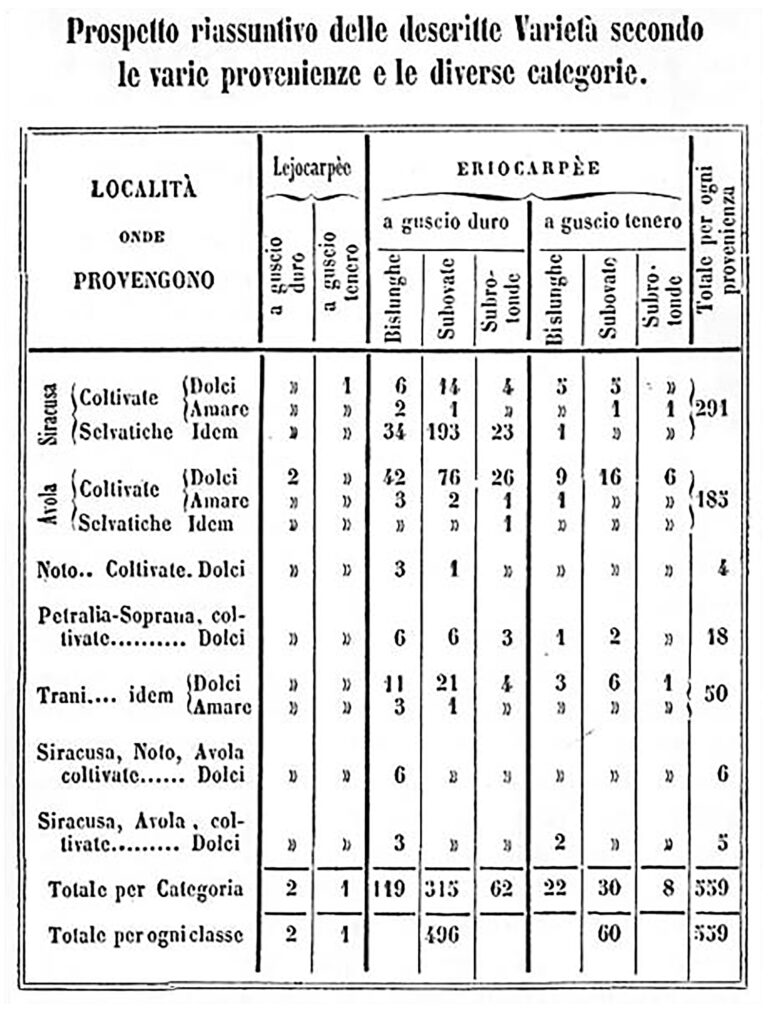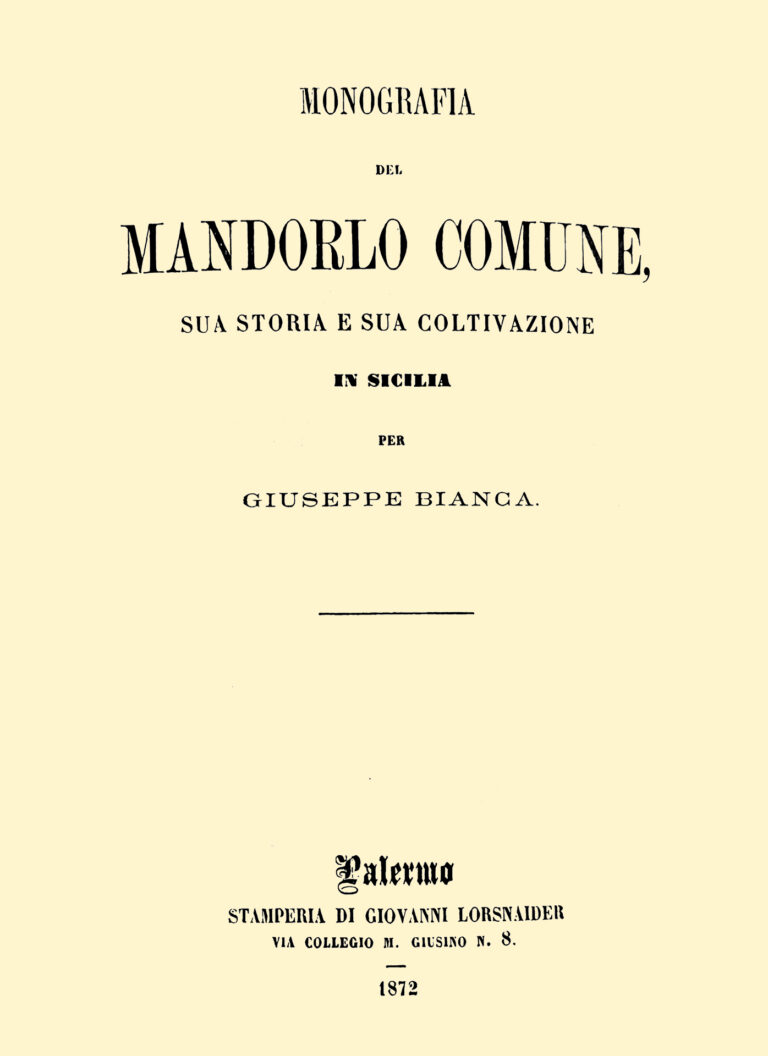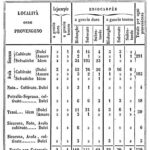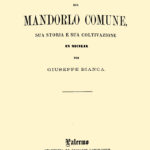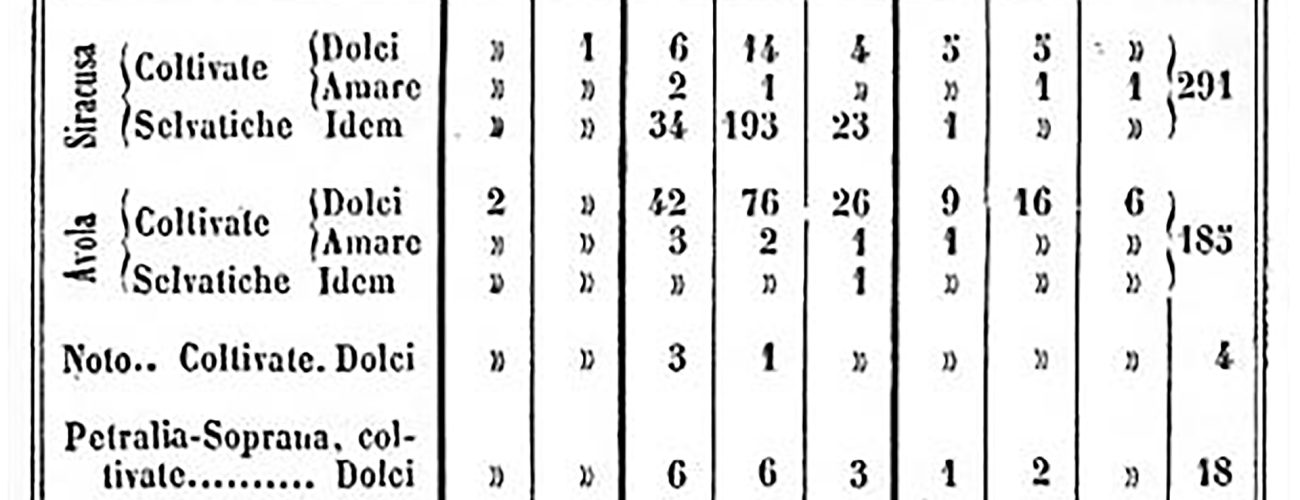
Bianca and his studies
Giuseppe Bianca was born in Avola on 4 February 1801, birthed by Corrado Bianca and Anna Molisina. Coming from a wealthy family, he was initiated into studies and attended schools with the Dominican Fathers of Avola. He subsequently continued his studies in law, but soon abandoned them to resume and deepen his humanistic studies and those related to the natural sciences. He dedicated himself to the translation of works in Latin and Greek, to the classics of Italian literature, and to some naturalistic readings on the plant world. Bianca’s entire literary production was influenced by the works of Darwin and above all by the works of Gussone, in particular by the text Prodromi della flora siciliana (1827).
He thus began a long and careful study, permeated by the scientific and philological rigor that marked the literature of the time, on the territory and on the Sicilian flora, in particular of his hometown Avola.
After over seventeen years of study, where the various elements were investigated from a topographic, geological, botanical, zoological and sociological point of view, Bianca published the work Flora dei dintorni d’Avola (Flora of Avola surroundings) in the Proceedings of the Gioenia Academy of Natural Sciences of Catania in 1839 (Atti della Accademia Gioenia di scienze naturali in Catania) and in the following years other works including Monografia su le campagne d’Avola e su l’agricoltura che vi si esercita 1851 (monograph on the countryside of Avola and the local agricultural practice); Sopra il rapporto intorno all’attuale malattia delle viti 1852 (Report on the current vine disease); Sul ritorno della cultura della canna da zucchero in Sicilia e nei dintorni di Avola 1853 (On the return of sugarcane culture in Sicily and around Avola); Monografia sul mandorlo comune e sulla sua coltivazione in Sicilia 1872 (Monograph on the common almond tree and its cultivation in Sicily); Monografia agraria del territorio d’Avola 1878 (Agricultural monograph of the territory of Avola) e Monografia sul carrubbo 1881 (Monograph on the carob tree).
Among the aforementioned texts, the monograph on the almond tree was very successful and was awarded a silver medal during the Agricultural Exhibition of Syracuse in 1871.
The text is divided into three parts: in the first the botanist from Avola exposed various theories regarding the origin of the almond tree, in the second he described the various parts of the plant and focused on the early winter flowering, which can occur, in some cases, even in December.
Furthermore, he identified and classified 752 varieties of almond throughout the Sicilian territory and described 559 of them, to which another 193 varieties were subsequently added; furthermore he also discussed the various uses of the almond and its usefulness, as all parts of this plant could be transformed and used.
Finally, in the third part the author delved into the methods of almond cultivation, the characteristics of the soil and climate that favored its yield, the various grafting techniques, diseases (intrinsic and extrinsic), and the harvesting of the almond.
The figure of Bianca is quite well known to the Avola community since he indicated and described the three cultivars of the area: the Pizzuta, the Fascionello and the Romana (or Corrente).
Bianca’s other important work is the Monografia agraria del territorio d’Avola in Sicilia (Agricultural Monograph of the Avola territory in Sicily), a text that can be ascribed to the natural sciences sector, but also represents an exceptional contribution of a demo-ethno-anthropological nature. In the text, divided into ten parts, the various elements that characterized the agricultural reality of the Avolese area are investigated, with references to the soil, the climate, knowledge and techniques, habits and customs, and the relationship between man and nature.
It is interesting to note that from the first chapters (particularly in Chapter II – Population) Bianca also dealt with social and economic issues, in this regard he analyzed the problems and historical reasons inherent to the division into social classes. In the following chapters (Chapters V, VI and VII) the author described the tools and implements, the plants and agricultural techniques, the schemes adopted in cultivation, furthermore he preferred to add, alongside the terms in Italian, also the lemmas in Sicilian dialect.
Bianca, in addition to being a Latinist and a man of letters appreciated by his contemporaries and by Manzoni himself, whose verses of the poem Il cinque maggio (Odes Alexandri Manzoni: Il cinque maggio: latina interpretatio) he translated into Latin in 1877, was also a attentive and passionate scholar of popular culture and the Sicilian language. In this regard he collaborated and discussed with famous scholars of the time, in particular with Corrado Avolio from Neto and Giuseppe Pitrè from Palermo. He wrote to the latter on several occasions and provided him with some information relating to the feast of St. John the Baptist, the “feast of the dead” and Christmas. Furthermore, Bianca himself, in 1858, published a brochure on the celebrations in honor of Santa Venera, Patron Saint of Avola. He died in Avola on 12 November 1883.
